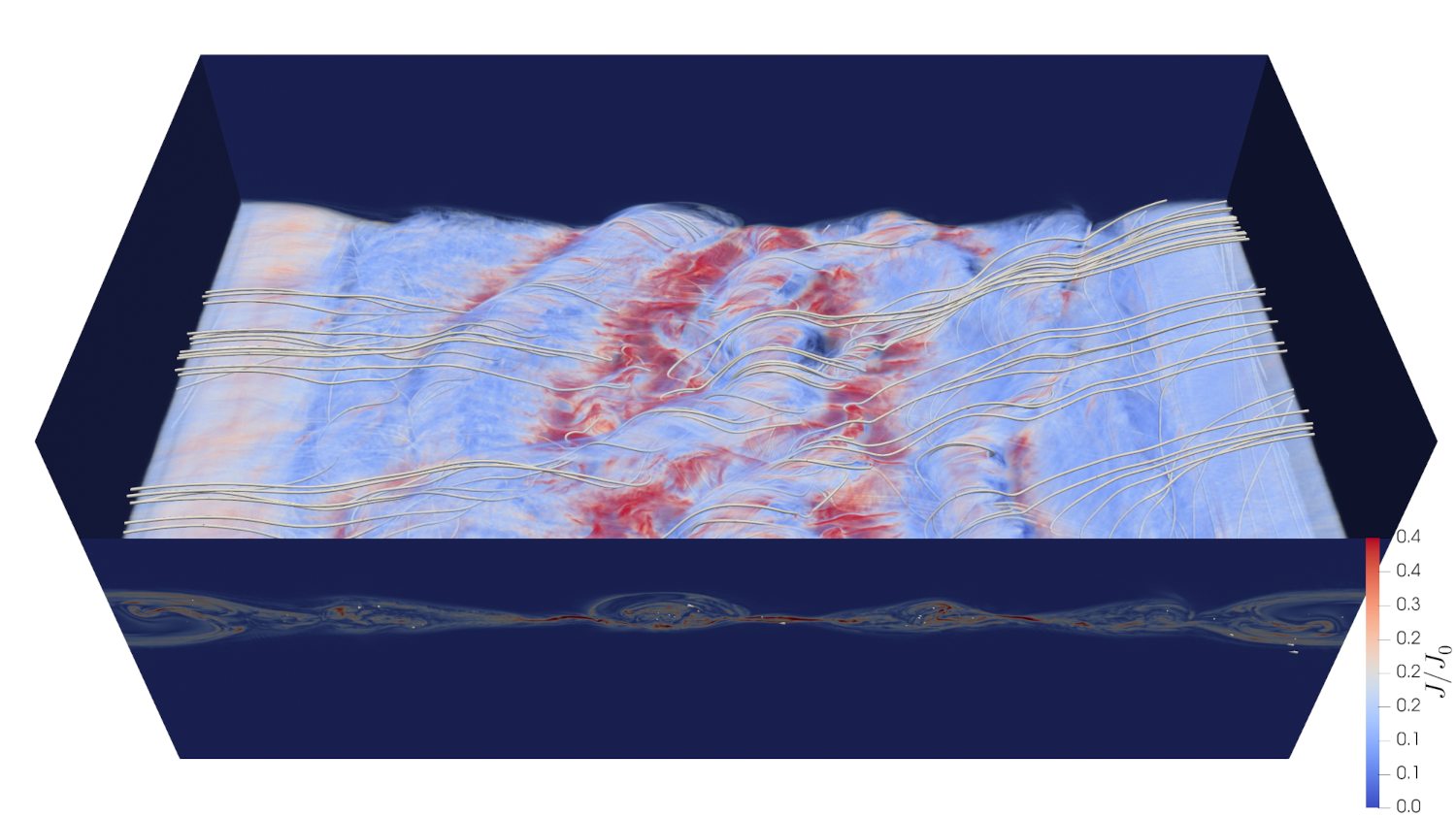Plasma Turbulence
Energy dissipation and particle transport in plasma turbulence across heliophysics regimes.

3D reconnection simulations show self-generated turbulence that seeds particle transport and acceleration.
active
We probe how turbulence generated by reconnection or large-scale drivers redistributes energy and accelerates particles by combining VPIC, hybrid, and reduced turbulence models with transport diagnostics.
What’s happening
- Exascale VPIC runs — Launching trillion-particle GPU campaigns to study how reconnection-generated turbulence impacts particle acceleration and transport.
- Reconnection-driven spectra — Quantifying anisotropy, compressibility, and cascade rates in turbulence spawned by 3D reconnection layers.
- Turbulent transport — Using tracer particles and test particles to measure diffusion coefficients and acceleration rates in reconnection-driven turbulence.
Featured publications
- 3D reconnection and electron power laws
X. Li et al. — ApJ (2019) — read - Fast Magnetic Reconnection with Turbulence in the High Lundquist Limit
L. Yang et al. — ApJL (2020) — read - Heating of Heavy Ions in Low-beta Compressible Turbulence
X. Fu, F. Guo, H. Li, & X. Li — ApJ (2020) — read
This line of work feeds turbulence parameters back into solar flares and SEP projects; message me if you’d like to compare diffusion coefficients or integrate these spectra into your models.